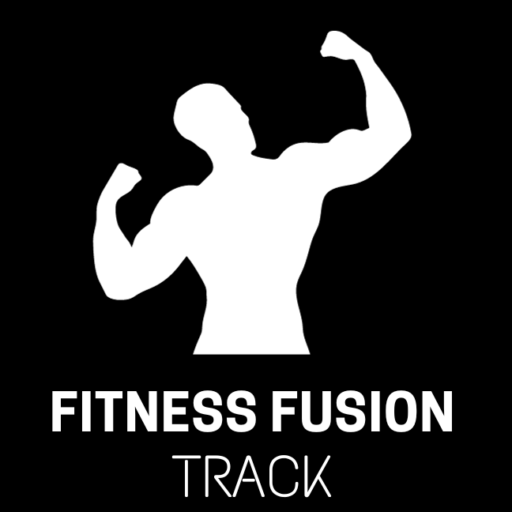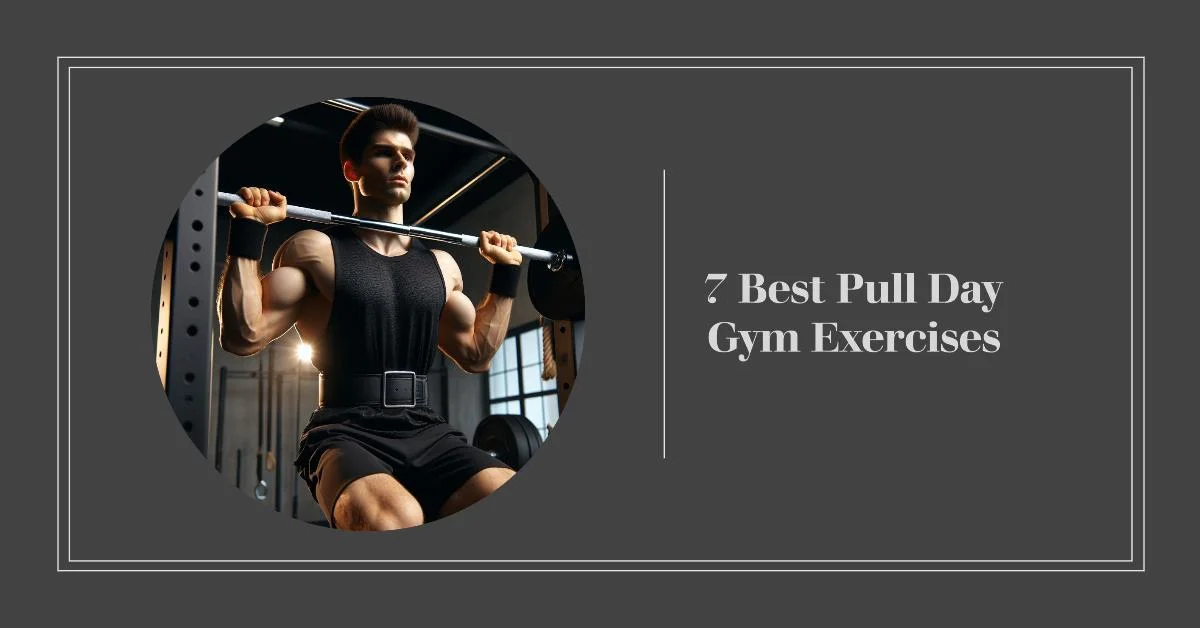Pull day gym exercises are a key component of any complete fitness program because they focus on the main muscle groups that are necessary for the strength and functionality of the upper body. Pull exercises, which target the back, biceps, and rear shoulders, include pulling actions towards the body as opposed to push exercises, which involve pushing activities away from the body. Workouts that include pull days improve posture, general physical performance, and muscular balance. The top pull day gym exercises that can help you build muscle and define your upper body while also improving your overall fitness journey are covered in this post.
Benefits of Pull Day Gym exercises
- Pull day gym exercises provide several advantages for people who want to improve their strength, body composition, and general level of fitness.
- These exercises enhance back strength and definition by focusing mostly on the back muscles, such as the latissimus dorsi, rhomboids, and traps.
- Pull day exercises also improve posture by strengthening the muscles involved in spinal stability and alignment.
- Pull workouts help build grip strength, which is necessary for a variety of functional motions both inside and outside the gym.
- Pull day routines also assist avoid imbalances that can cause injuries and limit development in other areas of fitness through boosting muscular balance and symmetry.
- All things considered, adding pull day workouts to the routine can lead to a stronger, more functionally capable body.
Understanding Pull Day Gym Exercises
- Understanding pull day gym exercises is important for making a successful upper body exercise routine.
- Pull exercises work your back, biceps, and rear shoulders by having you pull resistance in the direction of your body.
- Pull exercises promote the muscles used in pulling actions, compared to push exercises, which involve pushing resistance away from your body.
- Exercises for pull days help you strengthen your upper body and improve muscular balance in addition to targeting particular muscle groups.
- Exercises like pull-ups, rows, lat pulldowns, and bicep curls are examples of pull day workouts.
- These exercises are essential for developing functional fitness, strengthening specific muscle groups, and improving posture.
- Understanding the basic concepts and advantages of pull day exercises enables people to create complete training schedules customized to their requirements and fitness objectives, which eventually results in more efficient and fulfilling workouts.
Pull Day Gym Exercises
Pull-Ups
One of the most effective upper body exercises, pull-ups target multiple muscles, including the back, biceps, and shoulders.

Deadlifts
Deadlifts engage the entire posterior chain, including the back, glutes, and hamstrings, making them a staple in pull day workouts.
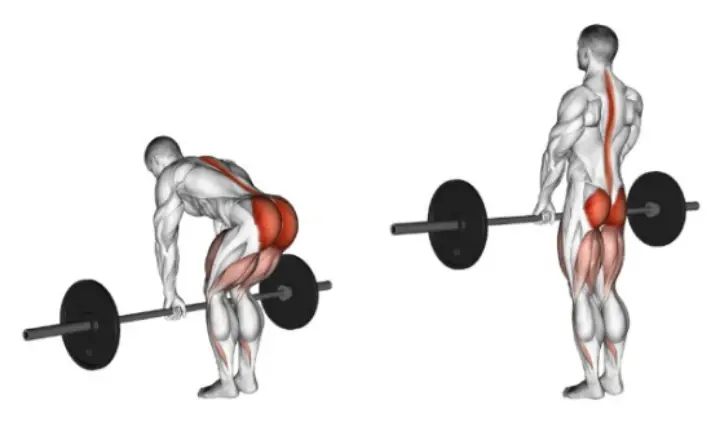
Bent Over Rows
This exercise targets the lats, rhomboids, and rear deltoids, promoting back thickness and strength.
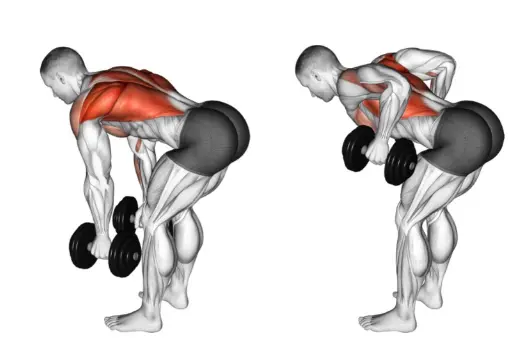
Lat Pulldowns
Lat pulldowns are excellent for isolating the latissimus dorsi muscles and improving overall back width.
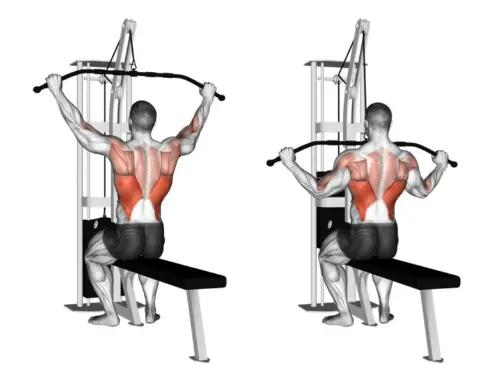
Face Pulls
Face pulls help in strengthening the rear delts and rotator cuff muscles, contributing to shoulder health and stability.
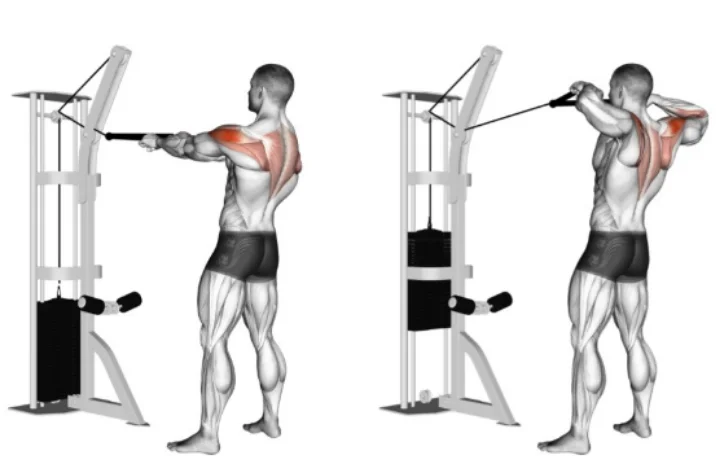
Bicep Curls
While primarily targeting the biceps, bicep curls also engage the forearms and brachialis muscles.
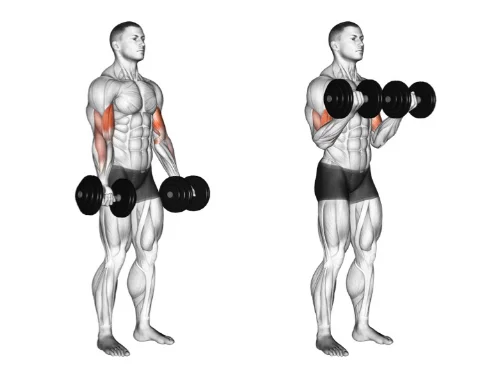
Shrugs
Shrugs target the trapezius muscles, helping in building upper back and neck strength.
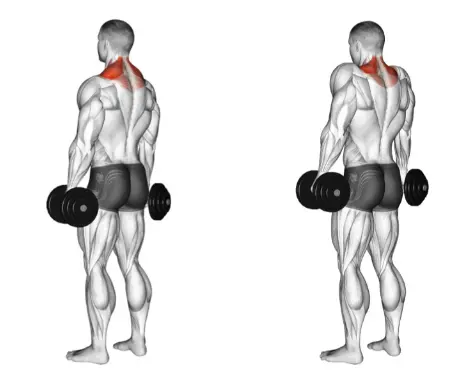
Tips for Effective Pull Day Gym Exercises
Effective pull day gym exercises require careful planning and execution to maximize results and minimize the risk of injury. Here are some tips to help you get the most out of your pull day sessions:
Warm Up Enough
Perform an energetic warm-up to improve blood flow to the muscles and prime them for the movements that will follow before beginning your pull day workout. Add exercises like arm circles, shoulder rolls, and mild rows that specifically target the muscles you’ll be exercising.
Focus on Proper Form
Correct form is necessary to target the targeted muscles efficiently and lower the chance of damage. Throughout each exercise, focus on keeping your spine in a neutral position, employing controlled motions, and activating your core.
Increase Intensity Slowly
As you make success in your fitness journey, add more difficult exercise variants, add weight, or increase repetitions in your pull-day workouts to progressively up the ante. Over time, this gradual stress promotes strength and muscular development.
Add Exercises for Compound and Isolation
Combine isolation exercises, like bicep curls, to target particular muscles with complex exercises, like pull-ups and rows, which target many muscular groups at once. This combo guarantees full-body muscular growth.
Make Use of the Right Equipment
Pull day gym exercises are best done with the right equipment, which includes cable machines, barbells, dumbbells, and resistance bands. Select exercise equipment that suits your level of fitness and offers a complete range of motion and resistance.
Listen to Your Body
During your workouts, pay attention to how your body feels and modify the intensity or technique as necessary. Stop the workout and see a fitness expert if you feel any pain or discomfort.
Stretch and Cool Down
After your pull day exercise, take a moment to stretch the muscles you worked and slowly decrease your pulse rate. Stretching the arms, shoulders, and back is a good way to increase range of motion and reduce muscle tension.
By following these tips, you can ensure that your pull day workouts are effective, safe, and enjoyable, helping you achieve your fitness goals efficiently.
Common Mistakes to Avoid
While pull day gym exercises are highly beneficial for upper body strength and muscle development, there are common mistakes that individuals often make. Avoiding these mistakes can help maximize the effectiveness of your workouts and prevent injuries. Here are some common mistakes to avoid in pull day exercises:
Using Momentum
One of the mistakes that happens most often is depending on muscle power to finish repetitions rather than using momentum. This raises the possibility of injury and decreases the exercise’s effectiveness. Make sure to maintain steady motions during each phase.
Ignoring the Eccentric Phase
A lot of individuals skip the exercise’s eccentric, or lowering, phase. Still, this stage is essential for developing strength and muscular mass. Make sure you maintain control over the weight as you climb in order to completely use your muscles.
Overtraining
When you don’t allow your muscles enough time to rest and heal in between sessions, you risk overtraining. Fatigue, burnout, and an elevated risk of injury can result from this. In order to help your muscles repair and strengthen, give yourself enough rest days in between pull day sessions.
Bad Posture and Form
Poor posture and form can make an activity less effective and put you at risk for injury. Throughout each exercise, be mindful of your form and posture, keeping your spine neutral and activating the appropriate muscles.
Not Progressing Enough
To maintain strength and muscular growth, progression is necessary. But some people don’t make the proper improvement because they continue to use the same weight or repetitions for too long. To push your muscles and encourage growth, gradually increase the weight, repetitions, or intensity of your pull day exercises.
Ignoring Warm-Up and Cool-Down Exercises
Neglecting these routines might make injuries more likely and impair performance. It’s important to warm up your muscles properly before beginning a pull day workout and to cool down at the end to minimize pain and aid in recovery.
Lack of Variety
Fatigue and plateaus can result from doing the same activities over and over again. To target various muscular areas and make your workouts interesting and difficult, mix up your pull day exercises.
By avoiding these common mistakes and focusing on proper technique, progression, and recovery, you can optimize the effectiveness of your pull day gym exercises and achieve better results while minimizing the risk of injury.
Importance of Rest and Recovery
- Pull day gym exercises are highly dependent on rest and recovery.
- Giving yourself enough time to recover after hard workouts that target muscles like the back, biceps, and rear shoulders is important.
- Muscles develop and mend during rest times, which is important for increasing strength and stamina.
- Getting enough sleep lowers the chance of injury and helps avoid overtraining.
- It enables the body to heal damaged tissues, refill energy reserves, and balance hormones.
- Including rest days in your training routine makes you perform better physically and helps you stay mentally healthy by avoiding burnout and exhaustion.
- Active recovery methods like foam rolling, stretching, and light exercise can also help muscles heal and reduce discomfort.
- Pull day gym exercises should be combined with rest and recovery to help people maximize their training results, reduce the chance of overuse problems, and maintain long-term success in their fitness journey.
Conclusion
In conclusion, adding the top pull day gym exercises to your workout routine can greatly improve your upper body strength, muscular definition, and general health. These exercises help to improve posture, balance the muscles, and lower the chance of injury by focusing on important muscle groups such as the back, biceps, and rear shoulders. To get the most out of any exercise, whether it’s pull-ups, rows, lat pulldowns, or bicep curls, you need to concentrate on utilizing correct technique, gradually increasing the difficulty, and getting enough rest and recuperation. You may successfully and efficiently reach your fitness objectives by including these workouts into your program with commitment and consistency.
FAQs
Q. How often should I do pull day gym exercises?
Aim to include pull day gym exercises into your routine at least twice a week, with adequate rest days in between sessions.
Q. Can I do pull exercises on the same day as push exercises?
While it’s possible to combine pull and push exercises in the same workout, it’s generally more effective to separate them to ensure adequate focus and intensity for each muscle group.
Q. Are pull-ups necessary for a pull day workout?
Pull-ups are highly beneficial but can be substituted with other vertical pulling exercises like lat pulldowns if needed.
Q. Should beginners perform deadlifts on pull day?
Beginners should start with lighter variations of deadlifts and focus on mastering proper form before incorporating them into pull day workouts.
Q. How can I prevent grip fatigue during pull day gym exercises?
Using grip aids like lifting straps or gloves to alleviate grip fatigue and allow you to focus more on the targeted muscles during exercises like deadlifts and rows.
